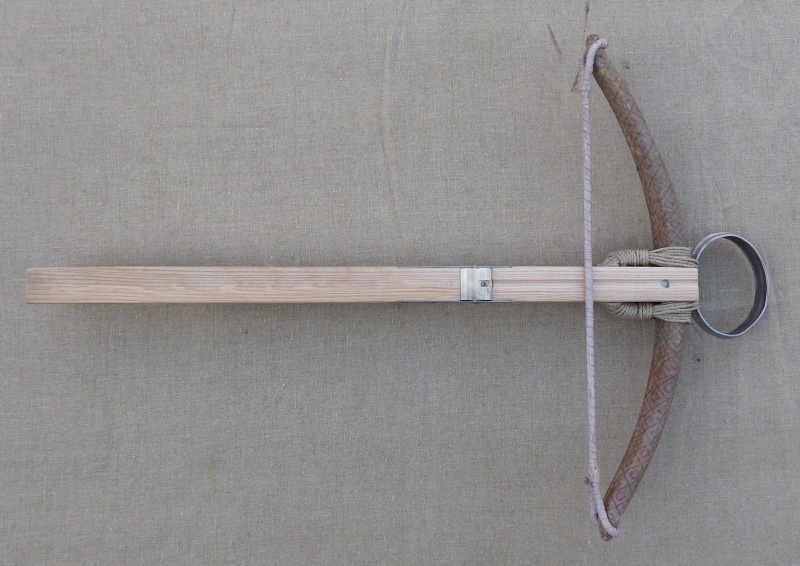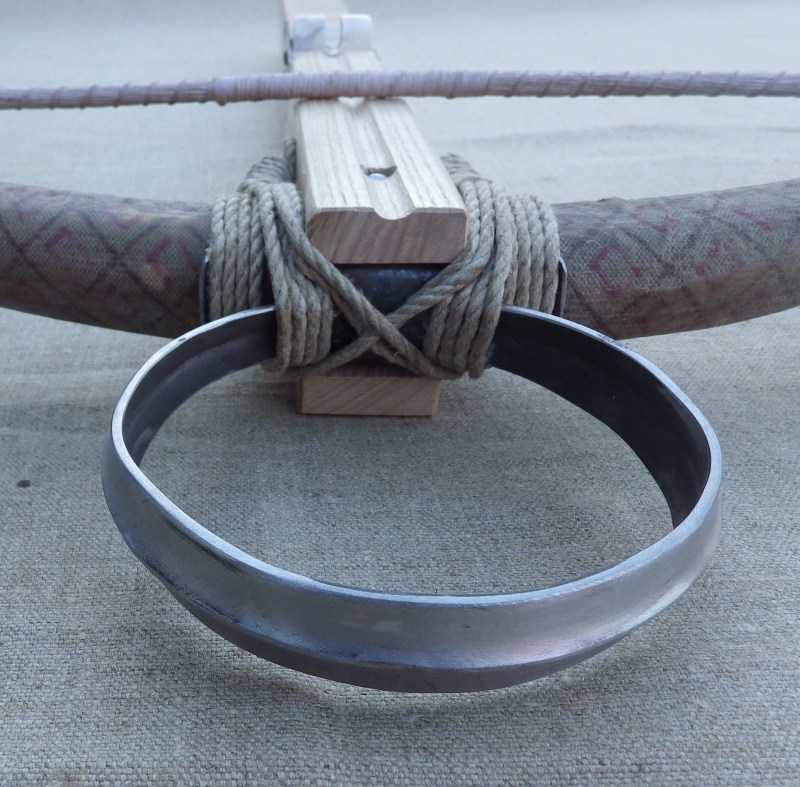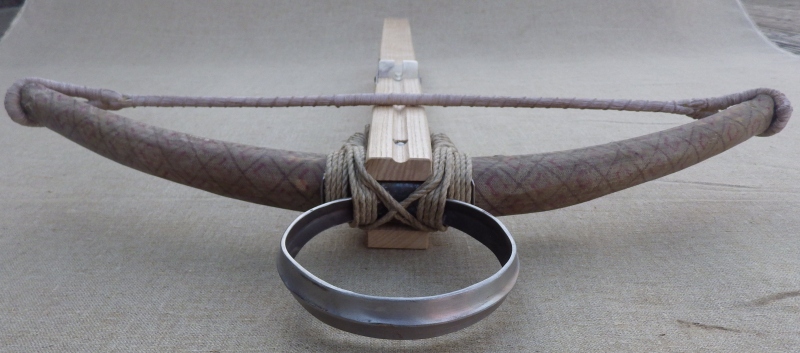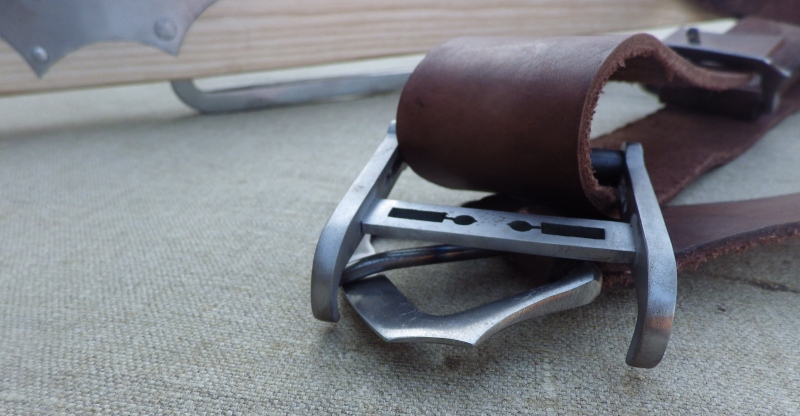I generally refer to these plain bows as 'munition bows' ; the AK47, FN, M16 etc of their day - plain, functional workhorses.
Earlier bows often have a small sweep under the bow, a longer and rather plain trigger and invariably a lashed composite bow. Steel bows came in around 1400 and rapidly became the norm for English and French bows, but prior to this composite was the prefferred (from around 1300) or yew if you didn't have the money. Yew if before 1300 (approx).
Composite bows are made by gluing sections of horn together and then hammering out tendons to make fibres and then gluing these onto the horn. You then wait a few months and tiller the bow, wrap in a moisture proof cover such as birch bark, parchment or snakeskin and sell for a high price. This makes them in a modern context very expensive and so this bow is made with a 'faux' composite formed around a steel bow and draws 250lb. The bow is dampened slightly but is still very useable and is spanned using a belt and claw.
This bow has an antler nut that is lighter than a metal one and so has a lower moment of inertia and makes for a more efficient bow. This was usually the case for earlier bows and for hunting bows. Military bows often used metal nuts from around 1400.
I hope you like it. This bow is available
Regards
Tod




